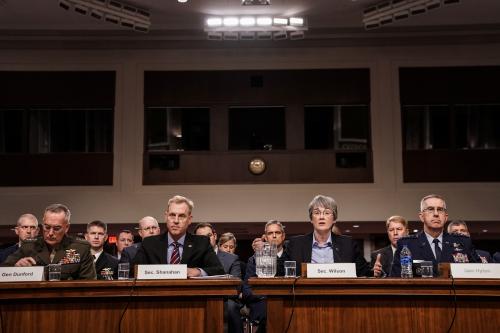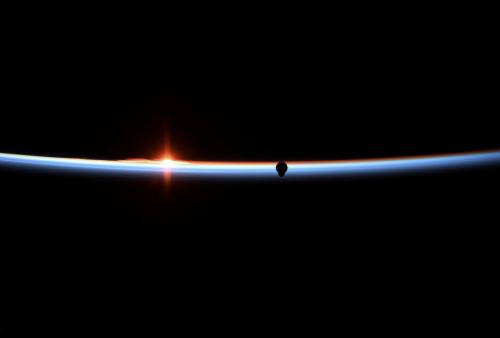This piece summarizes a July 31, 2019 public event at Brookings in which experts discussed the threats to security in outer space and potential policy responses.
The outer space environment is increasingly contested, with countries like Russia, China, India, and others all playing more active roles. In response, President Donald Trump proposed the creation of a U.S. Space Force in 2018, which was met with mixed reactions. That debate continues today.
On July 31, the Foreign Policy program at Brookings hosted a discussion on the evolving threats to space security and how the United States and the international community can most effectively respond to these challenges. Brookings Senior Fellow for Security and Strategy Frank Rose was joined by an expert panel including Todd Harrison of the Center for Strategic and International Studies, Mallory Stewart of the Sandia National Lab and Department of State, and Brookings Nonresident Senior Fellow Madelyn Creedon. Brookings Senior Fellow Michael O’Hanlon moderated the discussion and also shared his thoughts on the issues.
The panelists discussed the evolution of space as a theater for military competition and even potential combat, as well as a potential domain for arms control. Creedon discussed the rise of new actors engaging in the space domain, and Rose argued that the U.S. has asymmetric advantages because of its space capabilities, noting that Russia and China have developed antisatellite capabilities in response. Stewart emphasized the changing narratives around space, with U.S. leaders identifying space as a possible warfighting domain and Russian and Chinese leaders portraying themselves as multilateralist actors. Harrison discussed the disordered nature of space as a domain, contrasting the lack of norms dictating behavior in space with centuries of norm development at sea.
Panelists also discussed U.S. priorities for restraining the weaponization of space. They discussed kinetic and non-kinetic earth-to-space, space-to-space, and space-to-earth systems, determining that the proliferation of each could be considered weaponization of space. Broadly, while the panel agreed that it was unrealistic to attempt to convince other space-faring countries to get rid of existing systems and difficult to verify agreements on non-kinetic systems, diplomatic efforts should focus on attempting to establish a moratorium on testing kinetic systems that produce debris in space. Rose pointed to comments by Trump administration officials that indicated an appreciation of the importance of reinforcing norms against debris production. Stewart highlighted the challenges of transparency and confidence-building in an environment that includes both military and commercial actors with different risk levels.
Finally, the panelists discussed U.S. Space Command and the possible establishment of a Space Corps or Space Force. While agreeing with the decision to reactivate U.S. Space Command, Creedon underscored the importance of ensuring that space capabilities were integrated into regional commands. Panelists explored the differences between a Space Force or a Space Corps model.
Following the conversation, panelists answered questions from the audience.





Commentary
Highlights: Experts discuss how the US can promote security in outer space
August 9, 2019